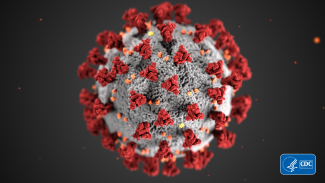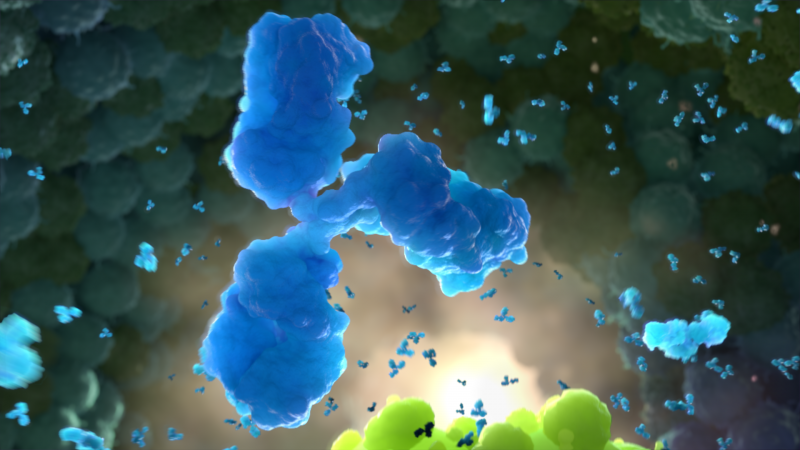Coronavirus Resources

Students may have questions related to the coronavirus pandemic or or COVID-19 vaccines. This page provides coronavirus-related resources from the Vaccine Education Center at Children’s Hospital of Philadelphia (VEC) and from the VEC’s classroom program, the Vaccine Makers Project (VMP).
To find an archive of questions about the coronavirus pandemic from 2020 and 2021, please visit the Archived Coronavirus Pandemic Questions page.
To note: Archived answers to questions were up to date at the time of publication but are not continuously updated. The archive serves solely as a record of past questions and answers.
If you have questions or feedback about these resources, please email vacinfo@chop.edu.
Questions and answers about COVID-19 vaccines
- COVIDVaccineAnswers.org is a dedicated page on the VEC website with answers to almost 100 questions received from around the world. The page also includes a form to submit your own questions.
- The printable Q&A PDF, "COVID-19 vaccines: What you should know," is available in English, Spanish and Japanese.
- The “Talking about Vaccines with Dr. Paul Offit: COVID-19” video series addresses common questions about COVID-19 and the vaccines in 1- to 3-minute video clips.
Animation resources
- The animations, How mRNA Vaccines Work and How COVID-19 Viral Vector Vaccines Work, allow viewers to travel inside a cell to see what happens after receipt of COVID-19 vaccines.
- Animations that explain how viruses infect cells and use cellular machinery to reproduce are available on the VMP Videos & Animations page. This page also includes a variety of animations and short videos that describe the immune system and vaccines.
- Trivia games based on the Vaccine Makers Project animations are available on the Kahoot! platform.
COVID-19 vaccine information and infographics
- The VEC “A Look at Each Vaccine: COVID-19 Vaccine” webpage provides detailed information about the COVID-19 vaccines available in the U.S. and includes the infographic, “COVID-19: The disease vs. the vaccine.”
- The infographic, “Rare, but severe, side effects following COVID-19 vaccination,” illustrates the extremely low occurrence of severe adverse events and provides information about who is at greatest risk for each effect.
- The infographic, “Student-athletes, COVID-19, and myocarditis,” compares the effects of myocarditis following COVID-19 vaccination or infection.
Personal perspectives on COVID-19
- The "My COVID-19 Vaccine Experience” videos offer individual perspectives from Children’s Hospital of Philadelphia (CHOP) colleagues in groups that were initially vaccine hesitant. This series includes some young people, and it also includes some videos in Spanish.
- The video series, "Perspectives on COVID-19 Vaccine for Kids," series offers short videos from clinicians at CHOP; families whose lives were dramatically affected by influenza, another viral infection sometimes deemed to be “mild;” and polio survivors whose lives were changed by the long-term effects of a viral infection during childhood.
Evaluating information resources
- The high school lesson, “Spread & Accuracy of Online Information: A Case Study Related to Vaccines,” introduces students to how scientists study the spread of information on social media and provides resources to help them critically evaluate online information. Examples of information evaluation resources in the lesson include the articles, "Dissecting Social Media: What You Should Know," "Evaluating Information: What You Should Know" and “Logical Fallacies and Vaccines: What You Should Know.”
- The three-part series, “No. This study does not prove what you think it does,” was written for the VEC’s free monthly e-newsletter for the public, called Parents PACK. The articles aim to help people learn more about how science is done and considerations when interpreting media reports or original studies:
- Part I addresses common misconceptions about the practice of science and looks at the importance of scientific rigor, including learning about skeptics and mavericks and which is more often found in science.
- Part II examines examples of studies that brought about a change in our understanding of previously accepted science.
- Part III provides tips for how to evaluate a study to determine the legitimacy of what is being claimed using examples of papers released during the COVID-19 pandemic.

